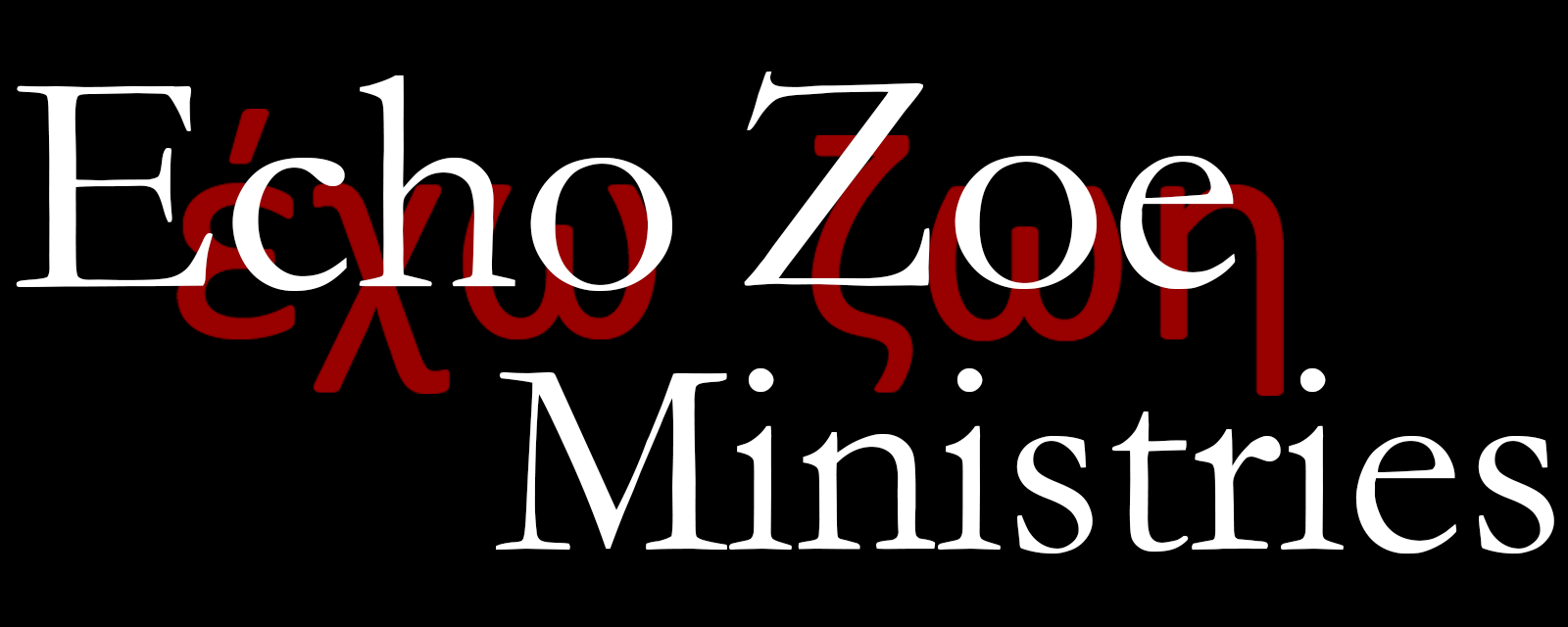Gabe Hughes returns for his sixth episode of Echo Zoe Radio. Since he was last on the show, he has taken a position as Associate Pastor of First Baptist Church in Lindale, Texas. He’s also an author, and creator of WWUTT, or When We Understand the Text, a ministry in which he creates Youtube videos, writes books, and has a daily podcast. For this episode, Gabe and I discuss Expository Bible Study. The basis of the topic is a seminar that Gabe has been participating in along with Pastor Tom Buck in which they teach pastors how to properly study the Biblical text in preparation for delivering sermons, but the material is also helpful to those of us who are not pastors in our personal study. Gabe spends an hour walking us through some simple steps to take to better understand the Biblical text.
Podcast: Play in new window | Download (Duration: 1:06:46 — 61.4MB)
Subscribe: RSS
Outline of the Discussion
- Tom Buck leads Expository Workshops for the G3 Conferences. Gabe has been working on them too since joining Tom at First Baptist in Lindale. The workshops are attended by more than just pastors; Sunday School teachers and prospective elders are other common attendees.
- The word ‘Expository' means ‘to expose.' Expositing scripture means that we expose it's meaning. Specifically, to expose the original meaning, as intended by the author.
- Exegesis (to draw out) is another term used synonymously with Exposition (Expository study.) The antonym of Exegesis is Eisegesis (to read meaning into the text.)
- To contrast expository preaching with topical preaching is a false dichotomy. Every sermon should be expository, even if it is part of a topical series as opposed to a verse-by-verse series. Exposit the scripture that addresses the topic.
- Walking through the sessions as taught in the Expository workshop:
- Yielding to the text.
- Get past any framework which may improperly frame our understanding of the text.
- Look at the context (things before and after.)
- Look for transition words.
- Determine if the text is imperative or indicative.
- Not all frameworks are necessarily bad, but it's important to recognize them as frameworks. An example is that even the division of the text into chapters and verses is a framework. Understand that such divisions can skew the way we understand the text.
- It's sometimes easy to see how others allow a framework to color their understanding of a text, but often very difficult to see how we do it ourselves.
- A simple exercise to see different angles of a verse is to read through it multiple times, putting a different emphasis on each word every time.
- Travel instructions.
- Don't travel directly from the Biblical text to applying it to the modern audience. This is a practice of moralism.
- Before we can apply the text to a modern audience, we must travel through the context and ensure we understand what it meant to the author and the original audience. The text can never mean to us now what it did not mean to them then.
- Once we know that it's been interpreted correctly, we can make a proper application.
- RC Sproul asked audiences how many interpretations of the text there are. The correct answer is always one. There may be many applications, but only one interpretation.
- Map the structure.
- This is considered one of the most neglected tasks.
- This is the process of creating an outline of the text.
- Examine the structure of the text. Look for things like: transition words, the beginning and the end (is there something at the top that's the same at the bottom?,) certain verbs or repeated phrases, themes, etc.
- An outline will help to remain focused on the broader context of a book than simply the specific verses being addressed (such as in a sermon.)
- Explore the context.
- Every book of the Bible has a central message that the author intends to communicate to the audience. Understanding the whole book will make each pericope (passage) more understandable and more powerful.
- It's essential to read the entire book before teaching any passage from that book. This will help to see themes that come up throughout the book.
- Understand the occasion that inspired the book. Consider three different types of context: Biblical, Immediate, and Historical.
- Not all three types of context will be needed every time.
- The immediate context, while the simplest to consider, can be very powerful.
- Cross the bridge.
- Once the exegetical work is done, put it into a form that can be taught.
- Even if you're not a pastor, and won't be teaching the text, look for how you can apply the text.
- Look for how the text points to Christ.
- We grow in sanctification when we read God's Word and we do what it says.
- Even if a text is not imperative, but rather descriptive, is there still something that applies to us now?
- Yielding to the text.
- From a bookmark that is handed out by Baptist Missionary Association Theological Seminary – The process of inductive Bible study is accomplished by answering basic inductive questions:
- Who is speaking and who is being addressed in the passage?
- What are the key words and/or phrases in the passage?
- What words or phrases are repeated?
- What are the cause/effect relationships in the passage?
- How does the passage relate to the rest of the chapter?
- Is there a promise to claim or a truth to believe?
- Is there an example to follow?
- Is there an attitude to change or a sin to confess?
- Is there a command to obey?
- State the main idea in 10 words or less?
Scriptures Referenced
- 1 Corinthians 15
- Philippians 4:10
- John 10:27
- Romans 3:23
- 1 Corinthians 14
- Philippians 4:13
- Romans 10:17
- John 17:17
Additional Resources
- WWUTT podcast episode on the same subject as this episode.
- Inductive Bible Study – BMATS
- How to Eat Your Bible – Nate Pickowicz (affiliate link)
- Expository Apologetics: Answering Objections with the Power of the Word – Voddie Baucham (affiliate link)




